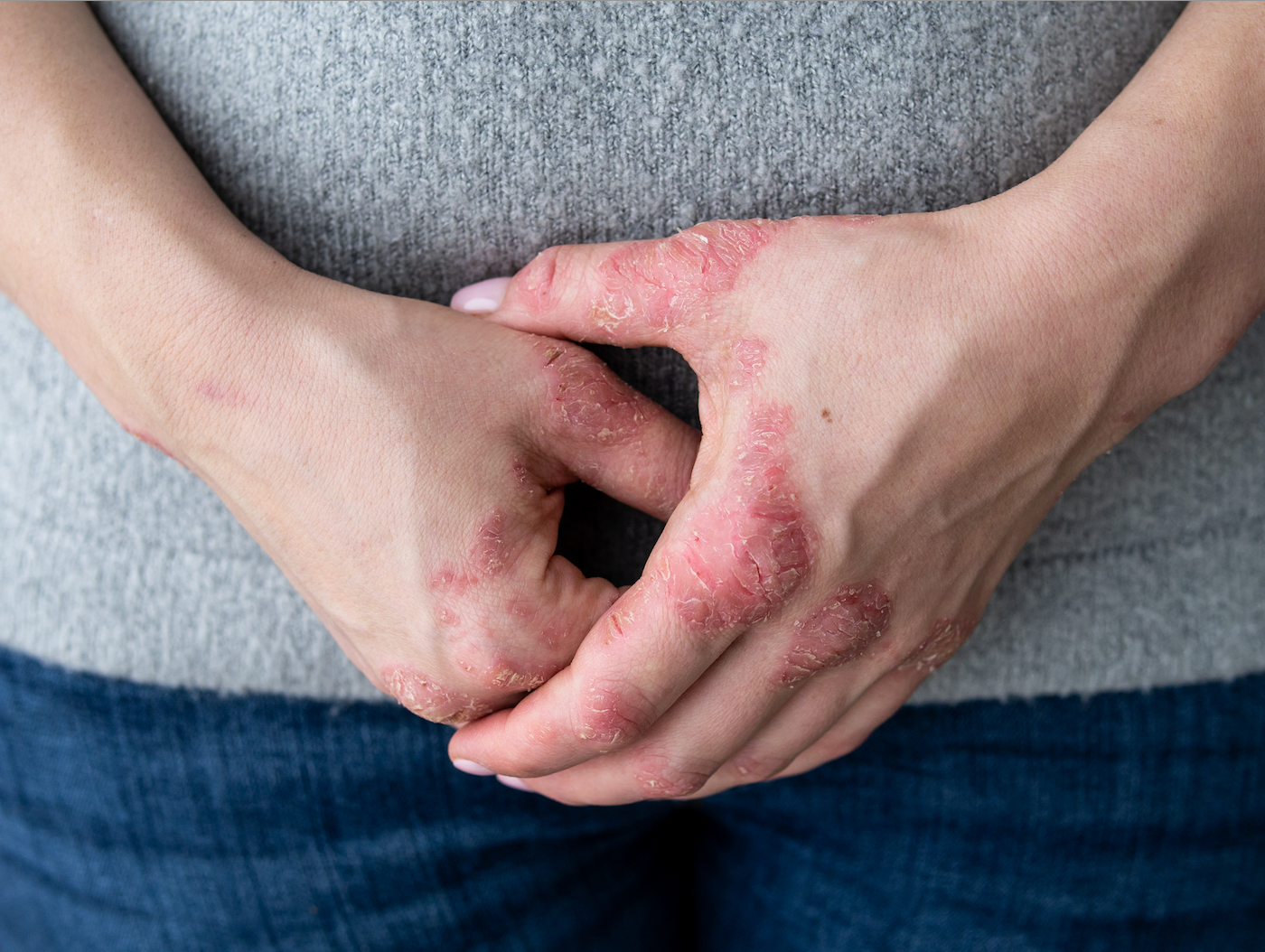Eczema is a pesky condition that tends to get steroids thrown at it all too often. To make matters worse, distinguishing between a typical flare-up and Topical Steroid Withdrawal (TSW) can be a bit difficult at first glance— but it’s crucial for proper skin management.
Today, we’re going to help you understand TSW symptoms and learn to differentiate between these two conditions. This can significantly impact your approach to treatment and relief.
Is It Just Eczema? Or Something Worse?
Eczema is a chronic skin condition that can manifest through periodic flare-ups characterized by redness, itching, and irritation. The symptoms of eczema flare-ups might include:
| Itching | Eczema flare-ups are often accompanied by intense itching, which can lead to scratching and further aggravation of the skin. |
| Redness and Inflammation | The affected skin areas tend to become red, inflamed, and swollen during flare-ups. |
| Dryness | Flare-ups often cause the skin to become excessively dry, resulting in flaking and cracking. |
| Localized Rash | Eczema flare-ups can lead to the appearance of small, raised bumps or patches of rough skin. |
| Triggers | Certain triggers such as allergens, stress, weather changes, or specific foods can worsen eczema flare-ups. |
However, some of these symptoms are actually shared with TSW, so let’s take a look at that now.
TSW Symptoms
Topical Steroid Withdrawal is a challenging condition that arises after prolonged and excessive use of topical steroid creams for skin conditions like eczema. Everyone with eczema that uses steroids should be aware of these symptoms, because TSW can be very difficult to recover from.
The symptoms of TSW may include:
| Red Skin Syndrome | Skin might become extremely red, resembling a sunburn, and feel hot to the touch. |
| Intense Itching | Similar to eczema, TSW also brings about intense itching, which can be more severe than during a regular flare-up. |
| Skin Thinning | Prolonged steroid use can lead to the thinning of the skin, making it more susceptible to injuries and tears. |
| Spreading Rash | Unlike eczema, TSW rashes can spread beyond the initial areas of application, affecting previously unaffected skin. |
| Flares and Remissions | TSW tends to have flares and remissions, with symptoms worsening during flare-ups and improving during remissions. |
If you’re wondering “what does the start of TSW look like,” the answer is that it will look a lot like eczema. As TSW starts to rear its head, the symptoms will be mild. As the steroids wear off more and more, the symptoms will become more intense.
How Are Eczema & TSW Similar?
As you saw, some symptoms are common to both eczema flare-ups and TSW. These include dry and scaly skin, skin discoloration, and crusting and oozing. However, with TSW, these symptoms tend to be much more intense.
How To Treat Eczema Flare-Ups
First and foremost, start weaning off of your steroid cream. Over time, the body becomes used to steroids, so you’ll have to use more and more of them to see the same effects – and that’s a recipe for disaster.
Try swapping out an application of steroid cream with a soothing, skin repairing cream – like our botanical-filled Skin Recovery Cream. Over time, you can wean yourself off of the steroid and only use it when absolutely necessary. Trust us, your skin will thank you!





















Leave a comment